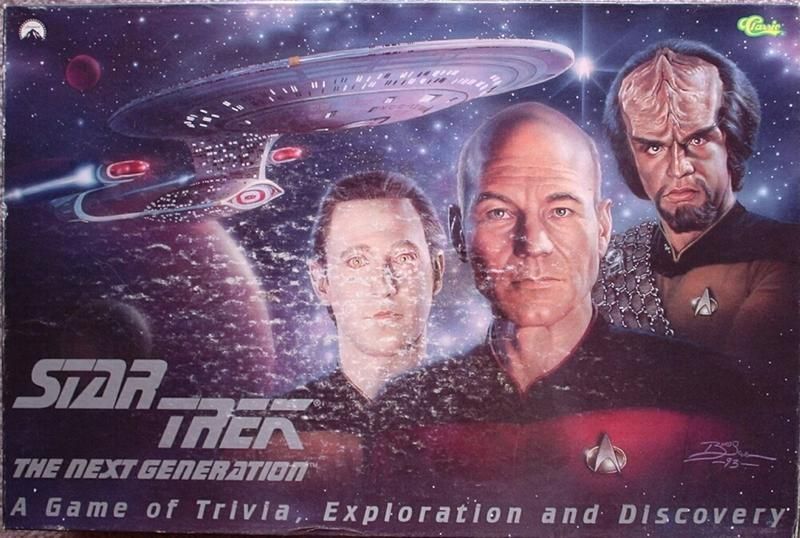Star Trek: The Next Generation (1993) Board Game
Star Trek: The Next Generation Board Game was released in 1993, and it is based on the popular science fiction TV series of the same name. The game allows players to take on the roles of different characters from the show and explore the galaxy while completing various missions and challenges.
Game Components of Star Trek: The Next Generation
How To Setup Star Trek: The Next Generation
To set up the game, players need to insert the VHS tape into a VCR and turn it on. The video, which includes a log entry by Jonathan Frakes as William Riker, sets the stage for the game. Players then place the game board on a flat surface, distribute the playing pieces, and prepare the various cards and tokens. The objective is clear from the outset: regain control of the *Enterprise* from the hijacking Klingon, Kavok.
Gameplay Mechanics and Game Objective
– Rolling a die.
– Drawing cards (Computer Access, Holodeck, Klingon Bij).
– Following video instructions from Kavok.
– Securing access to five levels of the main computer.
– Obtaining a phaser from Security.
– Crawling down a Jeffries tube to access the Bridge.
Player Experience
Playing **Star Trek: The Next Generation Interactive VCR Board Game** is an immersive experience that combines video segments with traditional board game elements. The game is known for its campy video segments, particularly with Robert O’Reilly as the disgruntled Klingon Kavok. Players must navigate through the game by following instructions from the video, rolling dice, and drawing cards. The game can be chaotic, with players needing to stay focused and work together to succeed.
Pros
Cons
Personal Thoughts on Star Trek: The Next Generation
This game is ideal for fans of *Star Trek: The Next Generation* who enjoy interactive and immersive gaming experiences. It teaches players to stay calm under pressure and to see through the complexity of the game mechanics to the core objective. While it may not be the most sophisticated game, it offers a fun and nostalgic experience, especially for those who grew up in the 1990s. However, it may not appeal to players looking for deep strategic gameplay due to its somewhat simplistic and arbitrary mechanics.
We are supported by our audience. When you purchase through links on our site, we may earn an affiliate commission, at no extra cost for you. Learn more.

